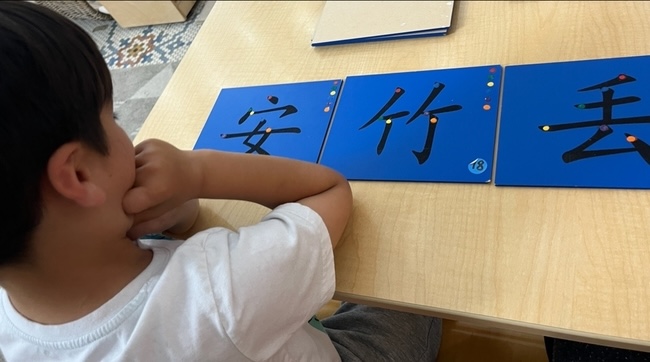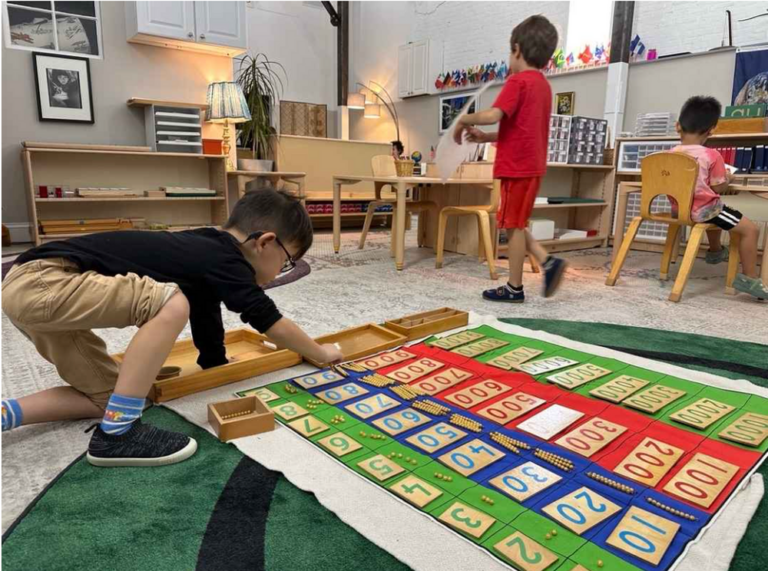Kindergarten at PCA
The kindergarten year is when children become leaders in their classrooms. Younger students look up to them, and in turn, they strengthen their own mastery by teaching others.
This is also the moment when years of sensorial and hands-on work crystalize into abstract understanding when a child realizes they can not only count beads but also solve math problems independently, not just recognize characters but read books in two languages.
By staying through kindergarten, families give their children the gift of retention and reinforcement. Skills don’t just get introduced; they get solidified during the kindergarten year.
At this critical stage of brain development, consistency and continuity ensure that learning is not just remembered but fully internalized.
✨ At PCA, we often say: preschool lays the foundation, but kindergarten builds the confidence. It’s the year when everything comes together and it’s why we encourage every family to continue through kindergarten to see the full benefits of Montessori and language immersion.
💡 Spotlight: Chain Work with Beads
At first, children count bead by bead. As they become more confident, they begin to skip count by groups—5, 10, 15, 20, or 10, 20, 30, and so on. Without realizing it, they are practicing multiplication.
- Visual Learning: Children see numbers growing in length, making abstract concepts concrete.
- Pattern Recognition: They notice that certain chains fold into squares and cubes, which introduces the idea of powers (5² = 25, 5³ = 125).
- Confidence Building: The physical act of counting and labeling each bead fosters concentration and pride in big work.
✨ Why it matters: Chain work transforms memorization into understanding. Instead of simply learning “2 × 5 = 10” on paper, children experience it with their hands, eyes, and minds. This foundation prepares them for multiplication, division, and algebra in the years ahead.
💡Spotlight: Reading Chinese Books
Children start with picture-based readers, where images support meaning. Then, they move into books with simple repetitive phrases and familiar characters. Over time, they progress into short stories, building fluency and comprehension step by step.
- Recognition & Memory: Daily exposure to characters helps children recognize words naturally, much like sight words in English.
- Contextual Learning: Reading within stories allows them to understand meaning through context, not just memorization.
- Confidence Building: The pride of holding a book and reading it aloud builds joy and ownership of language learning.
✨ Why it matters: Being able to read in Mandarin at such a young age shows the power of consistency and immersion. It’s not about memorizing flashcards, it’s about making a new language part of daily life. When children see themselves as readers in two languages, they gain confidence, persistence, and a love of learning that will serve them for years to come.




